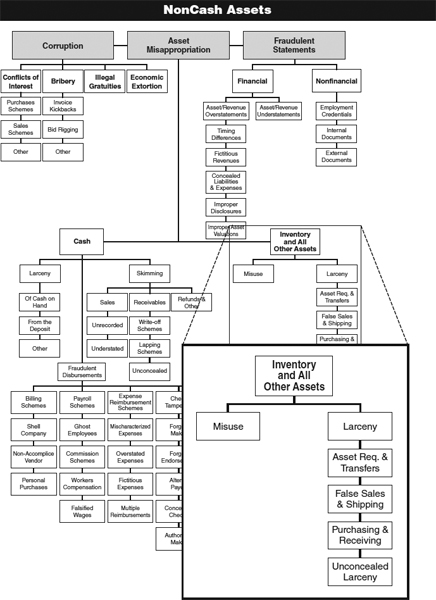
EXHIBIT 9-1
CHAPTER 9
NONCASH ASSETS
LEARNING OBJECTIVES
After studying this chapter, you should be able to:
| 9-1 | List the five categories of tangible noncash misappropriations discussed in this chapter |
| 9-2 | Discuss the data on noncash misappropriations from the 2011 Global Fraud Survey |
| 9-3 | Explain how misuse of noncash assets can negatively affect organizations |
| 9-4 | Understand how and why unconcealed larceny of noncash assets occurs |
| 9-5 | Be familiar with internal controls and tests that can be used to prevent and detect noncash larceny |
| 9-6 | Understand how weaknesses in internal asset requisition and transfer procedures can lead to the misappropriation of noncash assets |
| 9-7 | Explain how purchasing and receiving schemes are used to misappropriate noncash assets |
| 9-8 | Understand how the theft of noncash assets through the use of fraudulent shipments is accomplished |
| 9-9 | Define shrinkage |
| 9-10 | Describe how fraudsters conceal the theft of noncash assets on the victim organization's books |
| 9-11 | Understand how employees can misappropriate intangible assets, as well as how companies can protect themselves from such schemes |
| 9-12 | Be familiar with proactive audit tests that can be used to detect misappropriations of noncash assets |
CASE STUDY: CHIPPING AWAY AT HIGH-TECH THEFT1
Nineteen-year-old Larry Gunter didn't know much about computers, but he worked as a shipping clerk ...
Get Principles of Fraud Examination, 4th Edition now with the O’Reilly learning platform.
O’Reilly members experience books, live events, courses curated by job role, and more from O’Reilly and nearly 200 top publishers.

